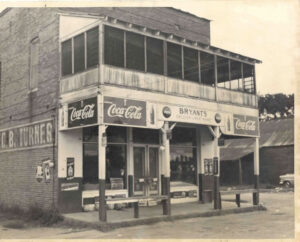 “Be small,” Mamie Till warned her 14-year-old son, Emmett, as he prepared to board a train bound from Chicago to Mississippi in the summer of 1955. “They have a different set of rules for Negroes down there.”
“Be small,” Mamie Till warned her 14-year-old son, Emmett, as he prepared to board a train bound from Chicago to Mississippi in the summer of 1955. “They have a different set of rules for Negroes down there.”
It’s one of the pivotal lines in the movie “Till,” which I saw, along with just a handful of other people, when it opened last week at the Highland 12 theater. I’d expected the movie to be hard to watch. I was right. When the subject is the brutal murder of a Black teenager and the sham trial that followed, you know you’re in for a rough couple of hours.
Single-mother Mamie Till had reluctantly agreed to let her only child travel to Mississippi to visit his cousins. Emmett was a happy-go-lucky kid who couldn’t have known or understood the racial realities of the Deep South. On August 24, after a day of picking cotton, the boys stopped for snacks and cold drinks at Bryant’s Grocery in Money, Mississippi. Roy Bryant and his 21-year-old wife Carolyn, who owned the store and were white, catered to the “colored” sharecroppers who worked the surrounding land.
What happened at Bryant’s that afternoon is the subject of decades-long debate. A 12-year-old witness who was inside the store recalled seeing Emmett scoop up a handful of bubble gum, pay Carolyn for it and go outside. No flirting and no touching. But several witnesses agreed that when Carolyn came out of the store, Emmett—hopelessly naive despite his mother’s stern warnings—let out a long, loud wolf whistle.
Three days later, Roy Bryant and his half-brother J.W. Milam forced Emmett from his uncle’s house in the middle of the night. They beat him savagely and then drove him to the banks of the Tallahatchie River, where they wired his body to a cotton gin fan, shot him through the head and threw him into the water. Emmett’s corpse was discovered by a fisherman several days later.
Mamie insisted on an open-casket viewing of her son’s horribly disfigured remains. Thousands of mourners came to pay their respects. After the funeral, Mamie travelled to Mississippi for the murder trial. She testified that she was certain the body found in the river was her son, despite what law enforcement officials claimed. Emmett’s uncle testified that, beyond the shadow of a doubt, it was Bryant and Milam who kidnapped Emmett. Then Carolyn Bryant testified that Emmett, using vulgar language, had flirted with her while in the store and had forced her hands behind her back and placed his hand on her hip.
It took the all-white, all-male jury only 67 minutes to find the defendants not guilty.
Soon afterwards, under Constitutional protections against double jeopardy, Roy Bryant and J.W. Milam sold their graphic confession to “Look” magazine for four thousand dollars. More than fifty years passed before Carolyn Bryant admitted she’d lied under oath. Emmett Till had never touched her or called her “baby” or asked her for a date.
Emmett Till’s lynching was the spark that lit the flame of the Civil Rights movement in America. The Montgomery Bus Boycott followed. The Little Rock Nine. Lunch counter sit-ins. Freedom Riders. The March on Washington and Martin Luther King’s “I Have a Dream” speech. Bloody Sunday on the Edmund Pettus Bridge.
There are those who insist that teaching our students this history—often and erroneously referred to as Critical Race Theory–serves no purpose. “Let’s forget the bad and focus on the good,” they say. With all my heart, I disagree. How can we keep from repeating the tragic mistakes of the past, and how can we atone for those mistakes, if we don’t even know about them?
“Till” just might be the perfect place to start.
(November 5, 2022)
But I would contend that it’s a movie that every American over the age of 12 ought to watch and imprint on their hearts.